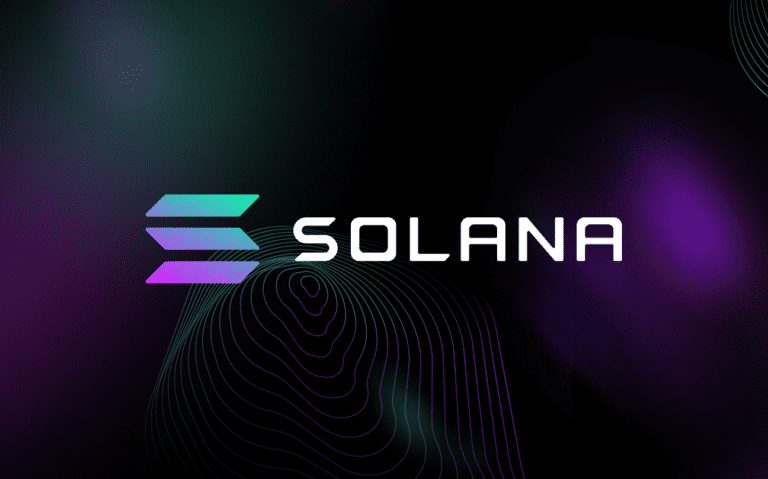Table of Contents
Imagine a blockchain that offers lightning-fast transactions, low fees, and scalability without compromising on security or decentralization. That’s Solana, a rapidly growing ecosystem that has captured the attention of developers, investors, and crypto enthusiasts worldwide.
Whether you’re a blockchain newbie or a seasoned crypto investor, understanding Solana is essential in navigating the evolving world of Web3. This article breaks down what Solana is, how it works, what makes it unique, and why it continues to be a leading choice for decentralized applications (dApps).
The Origins of Solana

Solana was created in 2017 by Anatoly Yakovenko, a former Qualcomm engineer. With deep knowledge in systems design and distributed technologies, Yakovenko identified a critical limitation in existing blockchains: scalability.
Most early blockchains like Bitcoin and Ethereum were not designed to scale to thousands of transactions per second (TPS). Their consensus mechanisms, though secure, were too slow for mass adoption. Yakovenko’s answer to this problem was Proof of History (PoH), a novel approach to timestamping transactions that allowed for high throughput without sacrificing decentralization.
The Solana mainnet officially launched in March 2020 and has since grown into one of the most widely used blockchains in the crypto space.
Key Features of Solana
Solana stands out from the blockchain crowd due to a set of powerful features that make it ideal for building dApps, NFTs, DeFi protocols, and more.
1. Lightning-Fast Transactions
Solana can process 65,000+ transactions per second (TPS), which dwarfs Ethereum’s ~30 TPS and Bitcoin’s ~7 TPS. This unmatched speed makes it capable of handling real-time use cases like trading platforms, gaming, and social media apps.
2. Ultra-Low Transaction Fees
Each transaction on Solana costs a fraction of a cent, typically less than $0.01. This is a game-changer for applications that require micro-transactions or frequent usage.
3. Proof of History (PoH)
Solana’s secret sauce is PoH, a cryptographic clock that timestamps transactions in a verifiable order. This enables nodes to agree on the time and order of events without communicating constantly, significantly reducing latency.
4. Energy Efficient
Unlike Proof of Work (PoW) blockchains like Bitcoin, Solana doesn’t require massive energy consumption. It’s estimated that a single Solana transaction uses less energy than a Google search.
5. Developer-Friendly
Solana provides a rich suite of tools, documentation, and SDKs. Its support for Rust and C (and soon Move) makes it accessible to traditional software developers.
6. Growing Ecosystem
From DeFi platforms like Raydium and Serum to NFT marketplaces like Magic Eden, the Solana ecosystem is vibrant and rapidly expanding. It’s also home to Solana Pay, Helium (IoT), and Audius (decentralized music streaming).
How Does Solana Work?
1. Proof of History (PoH)
PoH is not a consensus algorithm but a timekeeping technique. It creates a historical record of events on the blockchain, using a Verifiable Delay Function (VDF) that generates a consistent cryptographic hash every few milliseconds. This system allows validators to process transaction.
2. Tower BFT
Solana uses a variant of Practical Byzantine Fault Tolerance (PBFT) called Tower BFT, which leverages PoH as a clock. This mechanism helps validators agree on the network’s state with minimal communication, reducing overhead and latency.
3. Gulf Stream
This is Solana’s mempool-less transaction forwarding protocol. It pushes transaction caching and forwarding to the network’s edge, allowing validators to execute transactions ahead of time and reducing confirmation times.
4. Sealevel
Solana can process thousands of smart contracts in parallel using Sealevel, its parallel smart contract runtime. Most blockchains process contracts sequentially, but Solana’s architecture supports concurrent execution.
5. Pipelining
Solana uses a technique called pipelining to optimize the process of data fetching and validation across nodes. It ensures each component of the system can operate simultaneously, increasing overall efficiency.
6. Turbine
Turbine is Solana’s block propagation protocol that breaks down data into smaller packets and distributes them across the network, similar to BitTorrent. This speeds up data transmission and helps maintain decentralization.
Why is Solana is Gaining Traction?
Solana is more than just a technical marvel — it’s an ecosystem with real utility and adoption. Here are a few reasons why it continues to grow:
- Low fees make it ideal for developers and users.
- Speed and scalability attract high-performance applications.
- Massive ecosystem with support from major VCs and exchanges.
- NFT and gaming boom with projects like Degenerate Ape Academy and Star Atlas.
- Integration with Web3 wallets like Phantom and Solflare make it easy to onboard new users.
- Even during market downturns, Solana continues to see development activity and community engagement, highlighting its resilience and long-term potential.
What Challenges Does Solana Face?
While Solana has numerous advantages, it’s not without criticism or issues:
- Network outages: Solana has experienced multiple network downtimes due to congestion or validator issues. These incidents highlight its complexity and the trade-off between speed and decentralization.
- Centralization concerns: A small number of validators control a large portion of the network, raising concerns about resilience and governance.
- Competition: Ethereum, Avalanche, and other Layer-1 solutions are continuously improving and pose serious competition.
Despite these, the Solana team is actively working on upgrades to improve reliability and decentralization.
Frequently Asked Questions (FAQs) About Solana
What is Solana used for?
Solana is used to build decentralized applications (dApps), including DeFi platforms, NFT marketplaces, gaming ecosystems, and payment systems.
Is Solana better than Ethereum?
Solana is faster and cheaper than Ethereum in its current form. However, Ethereum is more decentralized and has a larger developer base. Both have unique strengths and use cases.
What is SOL token used for?
SOL is the native token of Solana. It is used for transaction fees, staking, and participating in governance decisions on the network.
Is Solana a good investment?
Solana has strong fundamentals, but like all cryptocurrencies, it carries risks. Do your own research and consider your risk tolerance before investing.
How can I buy Solana (SOL)?
You can buy SOL on major exchanges like Coinbase, Binance, Kraken, and through decentralized platforms supporting Solana-based tokens.
Conclusion
Solana isn’t just another blockchain, it’s a bold reimagining of what blockchain technology can achieve. With blazing speed, microscopic fees, and a rapidly expanding ecosystem, it offers a real alternative to Ethereum and other Layer-1s.
However, like any ambitious project, it faces growing pains and ongoing scrutiny. As the network matures, the true test will be whether Solana can maintain its speed and affordability while enhancing decentralization and resilience.
Last updated on August 20, 2025

